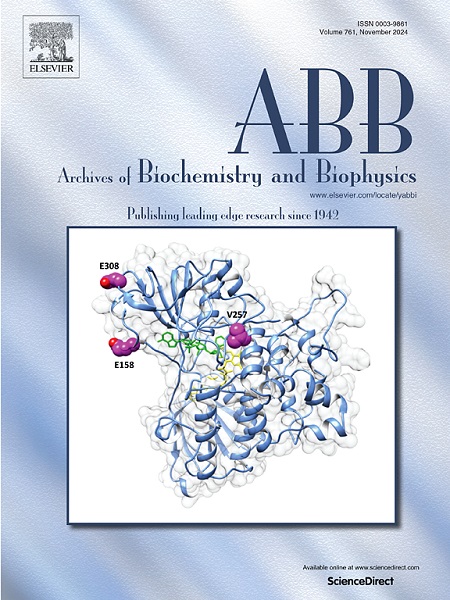Interaction of novel N-acridine thiosemicarbazones with lipid membrane: NMR and molecular dynamics simulations
IF 3.8
3区 生物学
Q2 BIOCHEMISTRY & MOLECULAR BIOLOGY
引用次数: 0
Abstract
NMR and molecular dynamics simulations revealed differences in the localization of the novel thiosemicarbazones: 2-benzoyl ((E)-N-(acridin-9-yl)-2-(phenyl(pyridin-2-yl)methylene)hydrazine-1-carbothioamide (AOBP) and 2-dipyridyl ((E)-N-(acridin-9-yl)-2-(di(pyridin-2-yl)methylene)hydrazine-1-carbothioamide (AODP) within the lipid membrane. It turned out that both thiosemicarbazones can penetrate inside the membrane, but AOBP is able to pass into the center of the hydrophobic region of the lipid bilayer, while AODP is distributed closer to the surface and freely leaves the membrane into the aqueous environment. The presence of cholesterol was also found to prevent both thiosemicarbazones from penetrating the membrane. The mechanism of anti-proliferative activity of some TSCs is related to the penetration through the lysosomal membrane and formation of cytotoxic copper complexes, which generate ROS resulting in lysosomal membrane permeabilization and cell death. Hydrophobic drugs, including TSCs, could penetrate through lysosomal membrane via passive diffusion, thus the affinity of drug to the hydrophobic interior of the lipid membrane could be important for their activity. Since the mechanism of thiosemicarbazones anticancer activity is associated with their penetration into lysosomes, the results obtained are important for a better understanding of the mechanisms of activity of these compounds and the development of new drug agents.

求助全文
约1分钟内获得全文
求助全文
来源期刊

Archives of biochemistry and biophysics
生物-生化与分子生物学
CiteScore
7.40
自引率
0.00%
发文量
245
审稿时长
26 days
期刊介绍:
Archives of Biochemistry and Biophysics publishes quality original articles and reviews in the developing areas of biochemistry and biophysics.
Research Areas Include:
• Enzyme and protein structure, function, regulation. Folding, turnover, and post-translational processing
• Biological oxidations, free radical reactions, redox signaling, oxygenases, P450 reactions
• Signal transduction, receptors, membrane transport, intracellular signals. Cellular and integrated metabolism.
 求助内容:
求助内容: 应助结果提醒方式:
应助结果提醒方式:


